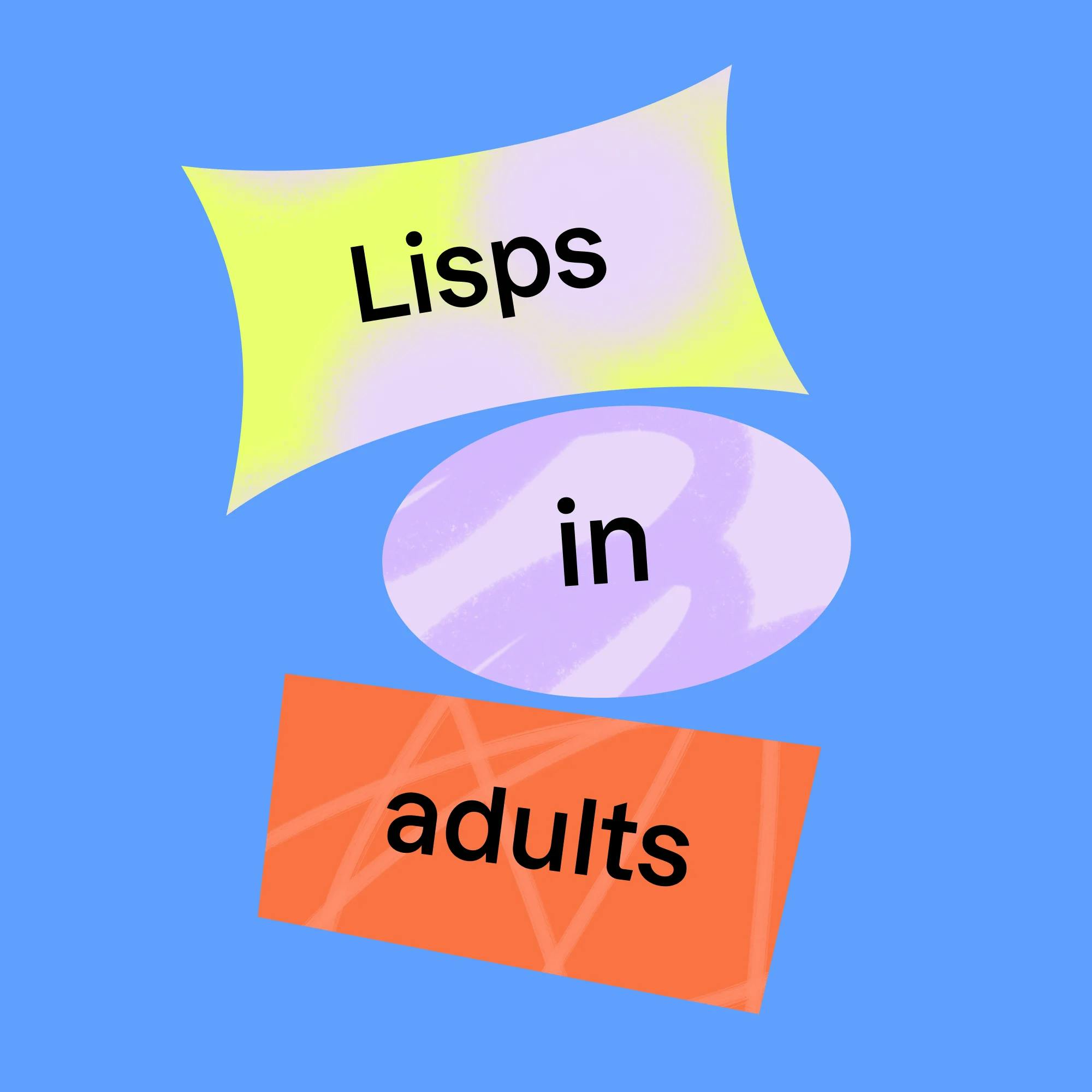People use the term “lazy tongue” for different reasons. That makes sense, because the phrase may mean different things to different people. “Lazy tongue” isn’t a clinical term, but it’s used to describe various speech symptoms and potential diagnoses.
How do you know if you have a lazy tongue? What are the symptoms of a lazy tongue? Learn the facts and how speech therapy can help you speak more clearly.
Take our free screener
Do you want to improve your communication? Take our online screener and find out if you or a loved one could benefit from speech therapy.
 Start the screener
Start the screenerWhat causes a lazy tongue?
There are several reasons that a person might believe they, or their child, have a lazy tongue. Let’s take a look at the most common.
Dysarthria
Some people describe slurred speech as having a lazy, weak, or tired tongue. This type of unclear, mumbling speech can be a symptom of dysarthria.
Dysarthria is a motor-speech disorder that weakens the muscles used to speak. This makes it difficult to coordinate and control these muscles, which can lead to a range of communication challenges. Dysarthria is often the result of damage to parts of the brain that are responsible for these muscles' movements.
This disorder can affect many aspects of someone’s speech. For example, a person’s speech may become slow, mumbled, or slurred. They may lose the ability to pronounce sounds and words correctly. They may also have a hard time controlling the volume of their voice or the quality and pace at which they talk.
Finally, because dysarthria involves muscle weakness, some individuals may drool when speaking or have problems retrieving enough air in their lungs. They may also have trouble with chewing and swallowing.


Lisp
Some people may refer to a lisp as having a lazy tongue. The most common symptom of a lisp occurs involves making a “th” sound when trying to say an “s” or “z” sound.
Lisps are caused by the incorrect placement of a person’s tongue during speech. When a person lisps, their tongue usually touches, pushes against, or protrudes between their teeth.
This incorrect tongue placement isn’t due to laziness. Rather, it’s an incorrectly learned speech motor pattern.

There are actually four distinct types of lisps, each with certain characteristics and tongue placement. While the differences may seem small, correct diagnosis is important when considering speech therapy for a lisp. Here are the four types of lisps:
Palatal lisp: As the name suggests, this lisp is associated with a person’s soft palate, more commonly referred to as the roof of the mouth. When a person’s tongue rolls back and touches the roof of their mouth during speech, they often have difficulty making “s” and “z” sounds.
Lateral lisp: This happens when a person’s tongue remains in a close-to-normal position, but airflow manages to escape from one or both sides of their mouth. A lateral lisp is sometimes referred to as a “slushy lisp” because it can make the speaker’s words sound “wet” or “spitty.” What you’re hearing is a mix of air and saliva.
Dentalized lisp: With a dentalized lisp, a person’s tongue pushes against their front teeth, directing airflow forward. This commonly produces a “muffled” sound.
Interdental lisp: These are also called frontal lisps. An interdental or frontal lisp happens when the tongue pushes forward or protrudes between the front teeth.

Tongue tie
Another cause of a “lazy tongue” can be a tongue tie. Tongue tie, also known as ankyloglossia, refers to having a short or tight lingual frenulum. This is the band of tissue under the tongue that connects the tongue to the floor of the mouth. A short or tight frenulum can limit or restrict the movement of the tongue.
A dentist or pediatrician can diagnose a tongue tie. But for some people, the condition remains undiagnosed, although they notice certain symptoms.
In some cases, a tongue tie makes it hard to pronounce certain speech sounds clearly. Other signs of a tongue tie can include:
Difficulty lifting the tongue to the upper teeth
Trouble moving the tongue side to side
Difficulty sticking the tongue out past the lower front teeth
A tongue that looks notched or heart-shaped when it’s stuck out
Difficulty chewing age-appropriate solid foods
Gagging or choking on foods
Pocketing or holding food in the cheeks
Expert speech support for adults
If you'd like to improve your speech skills, we're here for you. Get matched with a licensed speech therapist today.
 Get started
Get startedHow can speech therapy help a lazy tongue?
Is it possible to fix a lazy tongue? When a person has concerns about a lazy, weak, or tired tongue, it’s a good idea to schedule a speech evaluation. The speech therapist will perform an assessment to determine the cause of the tongue problem and what kind of treatment is best. They can also make a referral to other professionals as needed, such as a doctor or dentist.
Speech therapy sessions will look different depending on the clinical diagnosis of the “lazy tongue.”
Speech therapy for dysarthria
For dysarthria, the speech therapist will develop a personalized treatment plan designed to help the person regain normal speech and meet their communication goals. The speech therapist will help the person:
Strengthen their speech muscles
Increase the movement of their lips and tongue
Clearly articulate words for clearer speech
Adjust the rate and pace at which they talk
Increase breathing support for louder speech
Practice communicating in real-life situations
If someone has severe dysarthria that significantly affects their ability to communicate, the speech therapist may recommend alternative communication methods. These can include using visual cues, writing, and gestures to get your message across, as well as a computer or electronic device. These tools are referred to as augmentative and alternative communication (AAC).
Speech therapy for a lisp
For a lisp, speech therapy will focus on helping the person learn the correct tongue position to make speech sounds, such as /s/ or /z/. Speech therapy for a lisp will help the person:
Better understand where they’re placing their tongue when speaking
Hear and recognize the difference between correct and incorrect pronunciation of sounds and syllables
Correctly make the target sounds they’re struggling to pronounce
Correctly pronounce more complex language, such as consonant and vowel combinations, structured and spontaneous sentences, and more
Practice using these correct pronunciations in real-life settings outside of therapy sessions


Speech therapy for a tongue tie
Now let’s talk about tongue ties. If a person with a tongue tie has speech problems, a speech therapist can try to help the person improve their speech sounds before any tongue-tie surgery is recommended. The speech therapist will assess whether the person can make certain sounds after they’re given instruction, or if they are physically unable to do it because of a tongue tie. The speech therapist may recommend following up with a doctor or dentist to discuss tongue-tie surgery.
It’s important to know that speech therapy may still be needed after surgery to continue learning to make the sounds that were affected by the tongue tie.
Speech therapists are trained and licensed to work with a range of communication issues. If you or a loved one seems to have symptoms of a lazy tongue, schedule a speech evaluation with a licensed speech therapist at Expressable. We’ll be glad to answer your questions and talk about next steps!
How Expressable Can Help
Concerned your child isn't reaching age-expected milestones? Looking for communication support from a professional? Expressable is a national online speech therapy practice serving children and adults. We treat all major areas of communication and feeding, offer flexible hours including evenings and weekends, and accept most major health insurance plans. We’re proud to have earned more than 3,000 5-star reviews from our clients (4.9/5 average).
Our therapy model is centered on parent and caregiver involvement. Research proves that empowering caregivers to participate in their loved one’s therapy leads to better outcomes. That’s why we combine live, 1-on-1 speech therapy with personalized education and home practice activities for faster progress.
Communication is more than words. It’s how we share how we feel and show who we are. We’re here to help you or your child do just that.
 Abby Barnes, M.S., CCC-SLP
Abby Barnes, M.S., CCC-SLP












